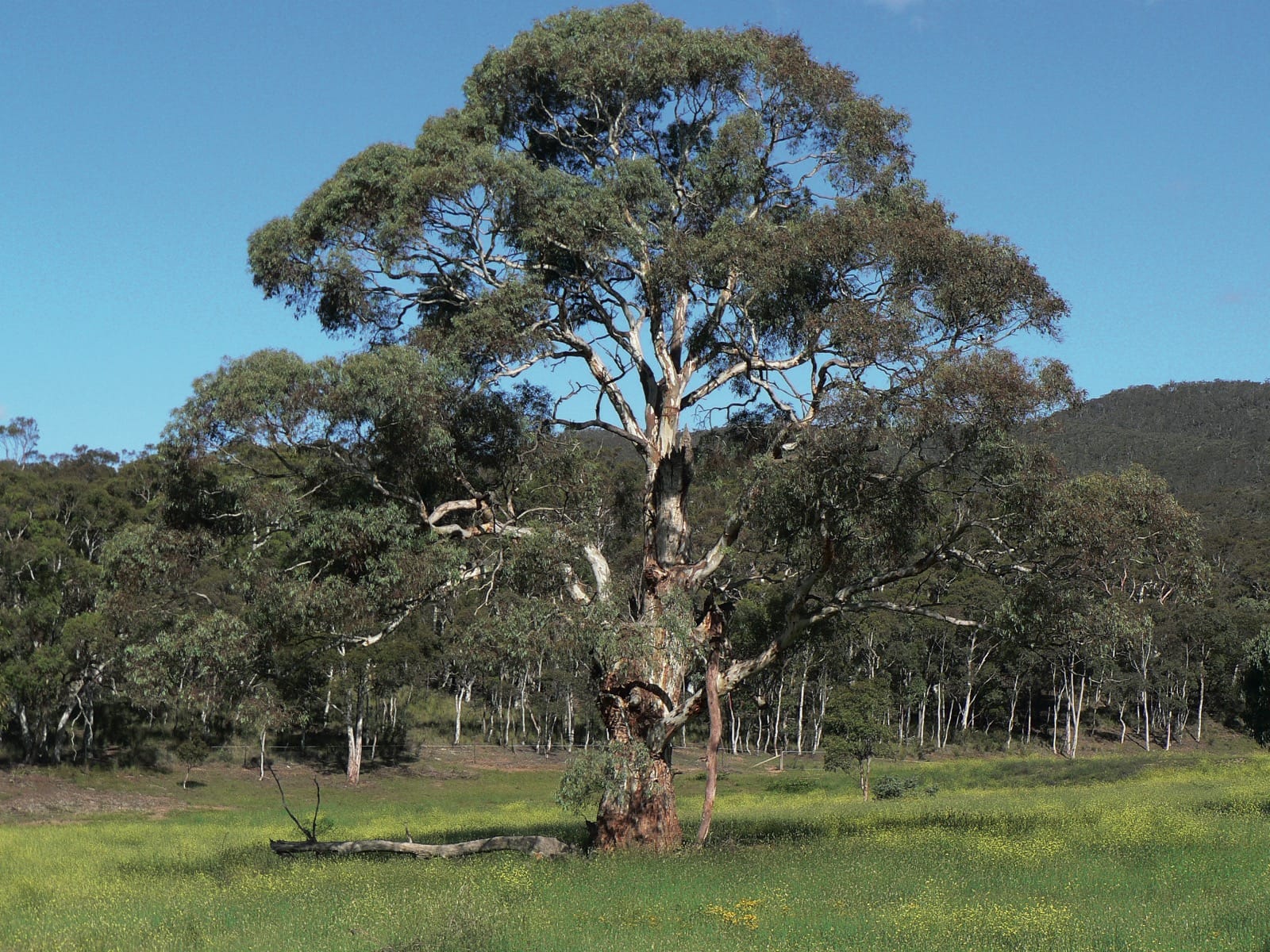Eucalyptus rubida
Credits
Article from New Trees by John Grimshaw & Ross Bayton
Recommended citation
'Eucalyptus rubida' from the website Trees and Shrubs Online (treesandshrubsonline.
Genus
Common Names
- Candlebark
Other taxa in genus
- Eucalyptus acaciiformis
- Eucalyptus albida
- Eucalyptus amygdalina
- Eucalyptus archeri
- Eucalyptus blakelyi
- Eucalyptus bridgesiana
- Eucalyptus brookeriana
- Eucalyptus camaldulensis
- Eucalyptus camphora
- Eucalyptus chapmaniana
- Eucalyptus cinerea
- Eucalyptus coccifera
- Eucalyptus cordata
- Eucalyptus crenulata
- Eucalyptus cypellocarpa
- Eucalyptus dalrympleana
- Eucalyptus delegatensis
- Eucalyptus elliptica
- Eucalyptus fastigata
- Eucalyptus fraxinoides
- Eucalyptus globulus
- Eucalyptus gregsoniana
- Eucalyptus gunnii
- Eucalyptus johnstonii
- Eucalyptus kybeanensis
- Eucalyptus lacrimans
- Eucalyptus laophila
- Eucalyptus leucoxylon
- Eucalyptus macarthurii
- Eucalyptus macrorhyncha
- Eucalyptus mannifera
- Eucalyptus melliodora
- Eucalyptus mitchelliana
- Eucalyptus moorei
- Eucalyptus morrisbyi
- Eucalyptus neglecta
- Eucalyptus nicholii
- Eucalyptus nitens
- Eucalyptus nova-anglica
- Eucalyptus obliqua
- Eucalyptus oreades
- Eucalyptus ovata
- Eucalyptus parvula
- Eucalyptus pauciflora
- Eucalyptus praecox
- Eucalyptus radiata
- Eucalyptus regnans
- Eucalyptus remota
- Eucalyptus risdonii
- Eucalyptus rodwayi
- Eucalyptus saligna
- Eucalyptus sideroxylon
- Eucalyptus stellulata
- Eucalyptus subcrenulata
- Eucalyptus tenuiramis
- Eucalyptus urnigera
- Eucalyptus viminalis
Tree 30–40 m, 1 m dbh. Bark smooth, white, red or reddish brown throughout; wild specimens often have horizontal insect scars. Branchlets greenish yellow to red. Juvenile leaves sessile, opposite, circular or elliptical and glaucous. Adult leaves thick and dull greyish green or glaucous, 9–15 × 0.8–1.5 cm, lanceolate to narrowly lanceolate, falcate, lateral veins distinct, margins entire, apex acute; petiole terete, 1.3–2.5 cm long. Inflorescences simple and axillary; umbellasters with three to seven flowers. Flower buds ovoid and often glaucous; hypanthium 0.4–0.5 cm wide; stamens white or cream. Capsule hemispherical to subglobular, 0.5–0.7 cm diameter; valves three to four, exserted. Boland et al. 1984, Chippendale 1988. Distribution AUSTRALIA: New South Wales (east), South Australia (Mt. Lofty Range), Tasmania (eastern plateau), Victoria (east). Habitat Woodland and open forest with shallow soils on plateaus, tablelands and hills, between 75 and 1400 m asl. USDA Hardiness Zone 8. Conservation status Not evaluated. Illustration NT359. Taxonomic note Similar to E. dalrympleana, but with glaucous juvenile leaves and white, red or reddish brown bark.
In cultivation distinctions have not been made between the four subspecies of Eucalyptus rubida, but as these seem to be useful and perhaps a pointer to different provenances, a key is provided below (modified from that of Hill & Johnson 1991a).
| 1a. | Umbellasters three-flowered | 2 |
| 1b. | Umbellasters seven-flowered; Australia (New South Wales, Victoria) | subsp. septemflora L.A.S. Johnson & K.D. Hill |
| 2a. | Trunk smooth to base; juvenile leaves circular | 3 |
| 2b. | Trunk with short, black stocking at base; juvenile leaves elliptical; Australia (New South Wales: Northern Tablelands) | subsp. barbigerorum L.A.S. Johnson & K.D. Hill |
| 3a. | Coppice shoots terete; juvenile leaves mostly < 4 cm wide; Australia (South Australia, Tasmania) | subsp. rubida |
| 3b. | Coppice shoots quadrangular; juvenile leaves mostly > 5 cm wide; Australia (New South Wales: Mt. Canobolas) | subsp. canobolensis L.A.S. Johnson & K.D. Hill |
The variability seen in Eucalyptus rubida should probably be more carefully investigated in horticulture; what is not in doubt, however, is that it can be an extremely beautiful tree. The rounded juvenile foliage is often an excellent blue colour, but may also show red tints as it flushes. In mature specimens the often multicoloured smooth bark is an important feature. When happy it can grow fast, young trees in Portland, Oregon achieving 10 m in five years (S. Hogan, pers. comm. 2007). It is reasonably hardy – there are mature specimens at the Celyn Vale Eucalyptus Nurseries near Corwen, Clwyd – but the largest recorded in the British Isles, at Castlewellan, Co. Down, was 25 m (58 cm dbh) in 2000 (TROI).

